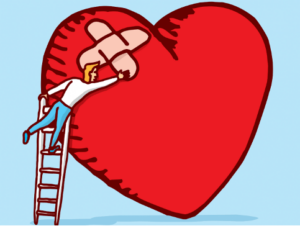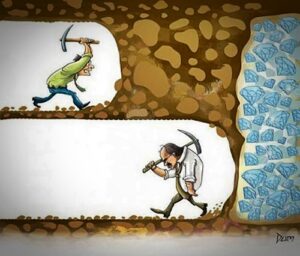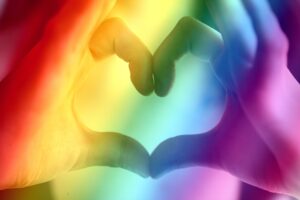Hurting to Heal

Hurt People; Hurt People.
This phrase has a certain element of truth.
Think about it. If we pay sufficient attention to those who knowingly or unknowingly cause suffering to others, they are likely to be observed as unhappy people in the first place.
And when unhappiness cannot be expressed appropriately and processed healthily, it becomes uncontrollable for such people. With striking out at others as the only coping mechanism or defense mechanism or even protection mechanism available to them, it causes even more unhappiness for others and for themselves.
Such behaviours are even more obvious in cases of abuse, regardless of their nature; verbal, physical, mental, psychological, or sexual. Thus, creating a vicious cycle.
A few of my clients encountered adverse childhood experiences and these misfortunes negatively impacted their lives as teenagers and adults, who may even be in their twilight years. The hidden grudge, misery, and sorrow in their lives may have been unconsciously transferred to others.
I am afraid this observation can be applied to ourselves as well; that is, if we dare to admit it.
An anonymous wise person said, “If you don’t heal what hurt you, you’ll bleed on people who didn’t cut you.”
It has been suggested that one of the ways to get ourselves healed and stop the bottomless downward spiral is to “forgive and forget” these tragedies.
The question is, can we really forgive and forget these adversities easily, willingly, and fully? My answer is not an absolute “yes”.
Let me illustrate with the following ex-client of mine.
A Hurt Child
A newly-wed young couple sought my help due to some challenges in their relationship. On the surface, the wife looked healthy, learned, capable, and doing well in a promising career.
However, after major quarrels with her husband over some stressors, she has a tendency to display self-harming behaviours at home. This triggered much fear and anxiety for her husband, as well as creating further conflict and friction in their marriage.
After a couple of sessions with Mrs D alone (name changed for confidentiality), the causes for her outbursts began to unveil.
For starters, she was diagnosed with a childhood skin problem, which led her to be constantly bullied during her formative schooling years. During this time, Mrs D also felt that her best friend in school betrayed her for self-protection. This “best friend” joined Mrs D’s bullies and ganged up to ostracise Mrs D. Mrs D’s school was also unable to completely shield her from being verbally and physically harmed by these bullies for years.
Due to this skin disease, Mrs D’s class attendance and academic performance were affected. To make matters worse, her extended families tend to compare school rankings and standings, education streaming and examination results, non-academic awards and recognitions, leadership titles and responsibilities amongst the cousins, belittling Mrs D.
In spite of these distressing setbacks, Mrs D studied harder and sharpened her leadership and creativity qualities in the educational setting. After graduating from a famous University, she joined a reputable organisation and was placed on an accelerated development track.
Mrs D’s resilience and determination in academia and career pursuits were remarkable and commendable. Although her skin condition was under control in her adulthood, the deep feelings of humiliation, hurt and unjust since childhood haunted her frequently. She had nightmares, flashbacks, and sensations of collapsing at times, which gave her much mental anguish.
When Mrs D was triggered by some tension in relationships, especially related to family and marriage, the emotional turbulences of a hurt child would emerge and engulf her suddenly. This steered her to lose her rationality and senses, causing her to physically hurt herself to cope with the psychological torment, sometimes in front of her husband.
Remember and Recover
I could not help but recognise and acknowledge Mrs D’s willpower and courage to seek professional therapy for her past traumas and the prevailing crisis. Her self-awareness and self-preservation were indeed affirmable and admirable.
During a pivotal therapy session, Mrs D sobbed uncontrollably, stating that she knew she should forgive and forget those people who had hurt her since childhood, but she simply could not do so.
I told Mrs D gently yet assertively that she was not expected to “forgive and forget”. She was stunned.
Instead, I suggested to Mrs D to consider another option instead – “remember and recover”. Such a paradigm shift challenged her morally-nurtured perception and socially-conditioned practice.
To Lewis Smedes, “Forgiving does not erase the bitter past. A healed memory is not a deleted memory. Instead, forgiving what we cannot forget creates a new way to remember. We change the memory of our past into a hope for our future.” I am totally aligned with this perspective.
(At that stage of the therapy process, I was mindful that Mrs D’s “moralities”, “beliefs“, “values”, “musts”, “shoulds”, “have-tos”, “ought-tos” etc had unnecessarily built another burden of “moral kidnapping” and self-blaming on herself, while her willingness and readiness to “forgive and forget” were not fully internalised yet. Thus, it was more important for me to focus on her situation as it was.)
I also agree with how Susane Colasanti puts it reflectively, “I want to be the kind of person who can do that. Move on and forgive people and be healthy and happy. It seems like an easy thing to do in my head. But it’s not so easy when you try it in real life.”
Mrs D was psycho-educated that “remember and recover” were even much harder to attain, yet more beneficial and valuable for her own self-growth, self-compassion, and self-love.
To me, “remember and recover” are an advanced stage of self-evolution.
Over a few therapy sessions, Mrs D and I spent the needed time, energy and resources in:
-
exercising bodily relaxation
-
practicing physical grounding
-
upkeeping emotional stability
-
establishing graphical life timelines
-
processing traumatic memory works
-
story reframing
-
“inner child” imagery re-scripting
-
event interpretation
-
exploring perspective-taking
-
strengthening self-compassion and self-love
-
conditioning self-forgiving processes
All these were aimed at what Bree Despain emphasised, “We don’t forgive people because they deserve it. We forgive them because they need it, because we need it.”, with an ultimate therapy goal in mind – a full recovery.
The journey of recovery was not smooth for Mrs D. So, you can imagine my elation when she finally gained an insight that she could be in a better position to move on with her own life after her wounds were healed. At the same time, she accepted that the physical and psychological scars would stay, which serve as a memory, reminding her to treat herself and others, better and nicer.
Healed People; Heal People.
The best revenge is none.
Heal, move on,
and don’t become like those who hurt you.
Pamela Short
Note: As this article is mainly catered to general members of the public, the case conceptualisation, intervention formulation, discussion and terminologies used are deliberately simplified and presented for an easy reading, comprehension and relevancy.
Image: https://www.quickanddirtytips.com/health-fitness/mental-health/4-ways-to-heal-your-broken-heart
This article was originally published on www.oberdanmarianetti.com on 17 May 2022.





